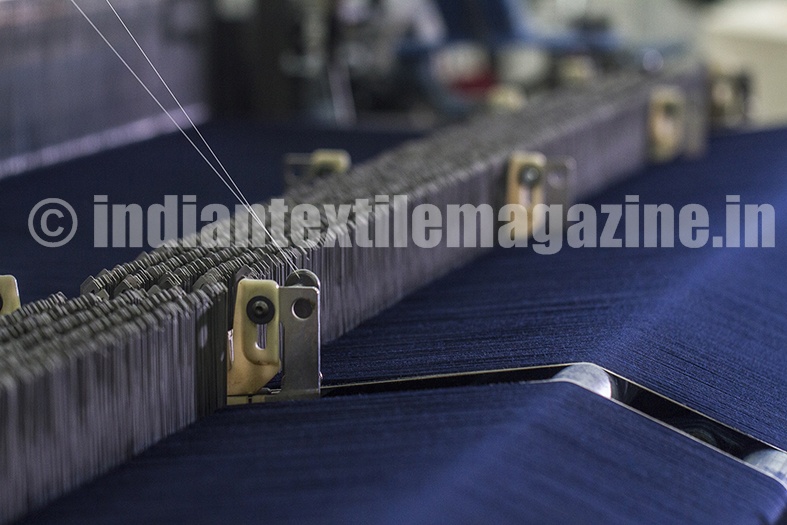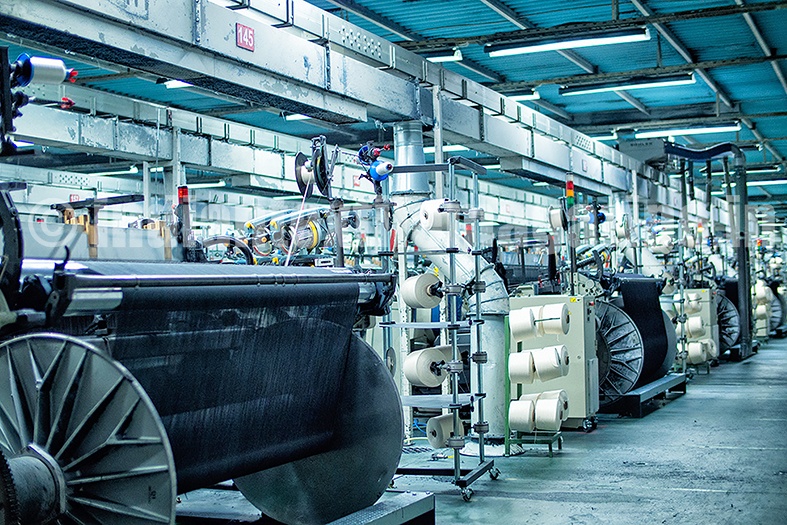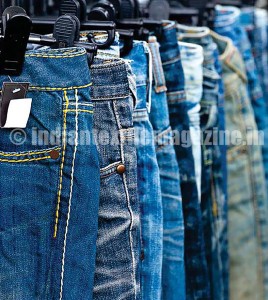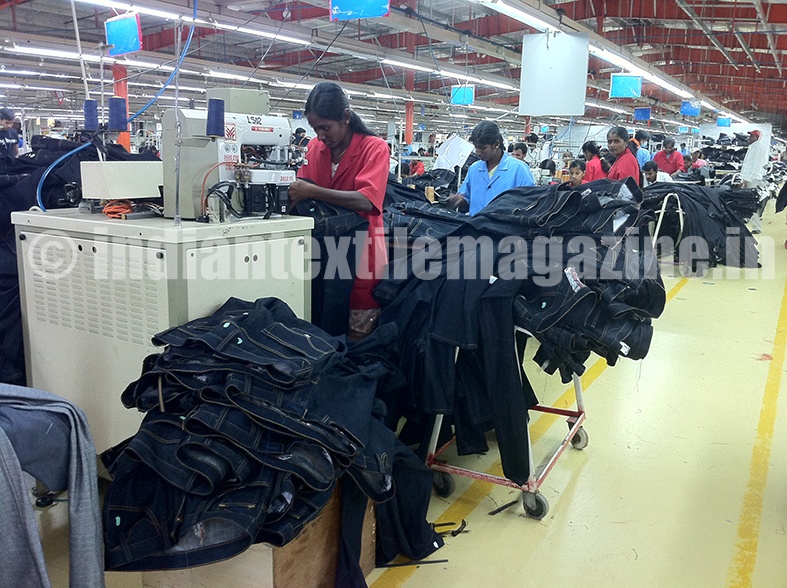The denim segment has always reigned as one of the leading segments in the fashion industry. The blue denim has been a wardrobe staple and a fashion essential for decades. Globally, the denim industry is expected to grow at a CAGR of over 6.5% during 2015 to 2020, with the market value expected to increase from $113 billion to $153 billion. In terms of pricing behaviour, the growth is expected to be the highest in the Premium and Super Premium categories of the denim products with smaller base numbers. The Latin Americas and Asia are expected to lead the growth in the segment.
India’s Denim Market
Despite a slowdown in apparel exports and domestic market growth, the denim market in India is clocking a consistent CAGR of 15% – 18% per year. Denim is also witnessing the fastest growth rate as an apparel fabric. The current installed capacity of almost 1,200 million meters is expected to increase to 2,000 million meters in next three to four years owing to the huge demand for the fabric.
While India’s share in the overall denim manufacturing capacities is around 10%, at present its share in the global jeans trade works out to 2.5%. India, with its resource advantage of all types of cottons and MMF fibres, and thanks to the introduction of state-of-the-art technology, manufacturing plants, and the entry of top global brands, surely has the potential to grab a higher share in the global market. According to industry estimates, a CAGR of 10% over the period of next 10 years for denim share in international trade is possible.
In terms of retail sales, due to the popularity of denim in India, denim wear market is expected to grow at a CAGR of 15% in the near future. The industry’s future looks promising due to the following factors:
- Rising disposable incomes
- Rapid growth of the retail sector
- The westernisation trend prevalent in the nation
- Booming internet retailing sector
- Young population demographics (15-29 year olds) with higher spending power
- A wide range of consumer segments that consider denim as an apparel of choice owing to its comfort and style
- Favoured preference for denim amongst youth owing to its versatile association
- Increasing usage of denim products by women and youth in smaller cities and rural India
India’s Denim Story
India is a big market with a lot of untapped potential for the denim industry despite the fact that the industry has been growing robustly over the past few years. For a majority of the Indian youth, denim is not just a casual wear, but more of a fashion statement. Almost 85% of the market is dominated by men, with 10% contribution from the female segment and the kids segment contributing about 5% of the market.
Male segment: The growth in the male segment of denim wear is quite significant despite enjoying the lion’s share in the total pie. Until a few years ago, denim was popular with men in the urban centres only. However, it has gradually become popular in the semi-urban and rural markets too. Growing awareness and an increasing sense of global fashion have led to the development, coupling with the continuous change in style statements. Denim is considered the most versatile of fabrics for men with multiple applications like casual wear, workwear, and everyday use.
Female Segment: Among all types of denim wear, jeans or trousers are the most popular articles among Indian women. Women in different age brackets of all shapes and sizes like to wear denim as it is comfortable, functional, and durable. Also, women who are not at ease with western wear have taken up to wearing jeans by pairing them with Indian ethnic wear like kurtis. This mix and match style is gradually picking up, particularly among women in small towns who come from a traditional background and is likely to fuel the growth of the segment.
The fashion element which is so inherently present in women’s clothes has been taken care of through the introduction of ‘flexible / stretch’ fabric for different applications. The segment is expected to grow the fastest.
Kids segment: It is the smallest segment in the domestic market, but is expected to grow faster than other segments primarily due to the availability of the products led by the innovations in the industry for hygienic and flexible fabrics.
However, the retail segment in the section has its own challenges since the larger market is dominated by unorganized sector due to pricing point disadvantages applicable to organised retailers. With parents and children becoming more conscious about kids fashion and trends, the kids wear segment in India is garnering a lot of attention of late. The advent of e-commerce in the apparel segment has resulted in the easier availability of products, though the pricing of products remains a challenge. The increase in purchasing power of the parents is expected to take care of this issue and propel the growth of the segment further.
Denim is now considered a staple product not only in the major metropolitan cities of India, but also in the Tier II and III cities. There is increasing acceptability of denim amongst all strata of the Indian society. However, the top 10 towns that account for less than 10% of Indian population account for almost 50% of domestic denim consumption.
With almost 35% of sales from the organised sector and 40% from the branded segment, the denim trend is expected to penetrate the market further and register significant growth in the near future.
In line with international trends, the share of premium and luxury products is expected to register the highest growth on a relatively smaller base confirming the hypotheses of increasing disposal income and fashion quotient of the youthful Indian population. (WWD, Cotton Inc., India infoline)
Demand Drivers and Popularity
The denim industry took root in India in 1986 and has since grown immensely.
India dominates the denim production in the Asia Pacific region and the total capacity for denim fabric manufacturing in India is 1200 MMPA. About 65% to 70% of the total production is consumed locally.
India has about 32 denim fabric mills with manufacturing capacity ranging from 10 MMPA to 110 MMPA. Though the market is currently dominated by men’s wear, other segments are also catching up fast. A huge chunk of denim consumption in the Tier II and III cities is accounted for by unbranded denims. However, as market penetration increases and disposable incomes rise in the semi-urban and rural areas, the general demand is expected to shift towards premium quality products and thereby, branded denims may occupy a higher share in the market in the years to come.
Quite a few yarn manufacturers have come up with innovative solutions to bring in a fresh change to this otherwise static industry. This has led to the introduction of new varieties of denims such as blended cotton yarn and biodegradable yarn made from wood pulp to attribute unique properties like softness, flexibility, and comfort in denim wear. Due to the changing dynamics of the products, the denim industry continues to remain an evergreen fashion favourite among the youth.
Growth Prospects and Triggers
Textile is one of the oldest sectors in India and accounts for 11% of exports in the country. Currently, the sector is valued at around $108 billion and it is expected to increase to $223 billion by 2021. The textile sector also encompasses the Indian denim industry, which has shown significant growth in the last five years.
The main drivers for the increase in the denim sector’s market share are:
Variety: Denim is made not just into jeans, but also into other items of clothing and accessories like shirts, shorts, dresses, bags, shoes, jackets and even upholstery products.
Purpose: In today’s society, denim serves almost all purposes. It comes in a range of colours and can be worn as formalwear as well as casual wear. There is a different type of denim to suit every occasion. This versatility has made economic sense to consumers to buy jeans compared to other bottoms.
Convenience: Denim wear is comfortable, low maintenance, and long lasting. A pair of denims can be worn for almost any occasion and is easy to care for than formal clothes.
Change in Women’s Tastes: Indian women are generally known for their affinity for traditional clothes. However, this trend is slowly changing as the modern Indian woman now wears denim in her daily life, thereby increasing the demand for the product exponentially.
Organised Retail Sector and E-Commerce: Demand is fuelled by the unprecedented increase in the number of shopping malls and the rise of online shopping portals. Due to the ease of ordering online, generous and flexible return policies, and the cash on delivery system, the youth of India is more likely to purchase denims online.
Fashion: Denim has always been an integral part of fashion for a long time and is unlikely to go out of style anytime soon. Indian youth are becoming increasingly fashion conscious and their spending power is increasing sharply, which makes life easier for the fast-growing ‘premium’ category of denim wear brands. It has become a trend to own a collection of denims in different colours.
Prices: Denim reaches different market segments at various price points. The price of denim wear depends on a number of factors like the quality of material, texture, comfort, cut, and wash. From extremely cheap jeans for everyday use to expensive luxury denim, there are denim products available to suit everyone’s budget and needs.
Exports: The global demand for denim is growing at a CAGR of around 6%. With an abundance of raw materials, the availability of trained manpower, and state-of-the-art technology, India has the potential to become a major denim exporter globally. The depreciating value of the rupee gives a competitive advantage to the Indian exporters.
Organised Sector: The expansion of organised retail sector has further added to the momentum denim industry. India is a preferred supplier of denim fabrics to almost all global brands.
Rural Spending: Rural areas are developing at a fast rate and so is the spending. The mid-value segment of denim wear, characterised by quality, value-for-money, and increasing styling quotient, is the preferred choice of people from rural areas.
Target Market: Earlier, denim used to be the choice of teenagers and people in their 20’s and 30’s. However, times have changed and denim has become the preferred choice of everyone from kids to the elderly.
Urbanisation of Work Culture: In recent times, denim has come to be accepted as business wear. Many large companies are making denims a part of their daily work culture to promote uniformity and to create a relaxed environment which is more conducive to work in. This is creating a huge demand for the denim market in India. Other places have a ‘Friday Casual’ concept where employees wear jeans to work at least once a week.
Innovation: The denim market is constantly redefining and reinventing itself with new designs, washes, cuts, and embellishments which keep the masses interested and the demand high.
Denim Exports
Besides the tremendous domestic growth prospects that the markets have to offer, the Indian denim industry is also looking to increase its share of exports from the current 35%. The position is further strengthened with the cotton availability advantage as compared to other sizable producers in the world, who have to import it from other producing nations.
A dedicated and focused approach towards increasing export revenues can boost the otherwise lower share of exports in the total revenues. Considering the insignificant share that India commands in the international trade of textiles and clothing, any new addition in denim manufacturing capacities is a welcome move. This increase in capacity along with encouraging textile policies and favourable exchange rate movements could help India achieve a significant export growth.
While additional capacity is added to the existing manufacturing by 2020, the domestic and exports ratio is likely to change from 65:35 to 55:45.
Industry Outlook
With all the initiatives the government is taking to boost the country’s textile sector, the coming years are going to be crucial for the industry. The Government is soon to announce its ambitious target of achieving 20% share of the global textile trade and helping the domestic industry attain a size of $650 billion by 2024-25. The target can be achieved with a strong focus on investments, better labour law reforms, and skill enhancement.
With the government taking so many steps to boost the nation’s textile sector, its benefits are likely percolate to the Indian denim industry in the coming years and ensure its steady growth which will be further fuelled by the various demand drivers for this sector in India.



